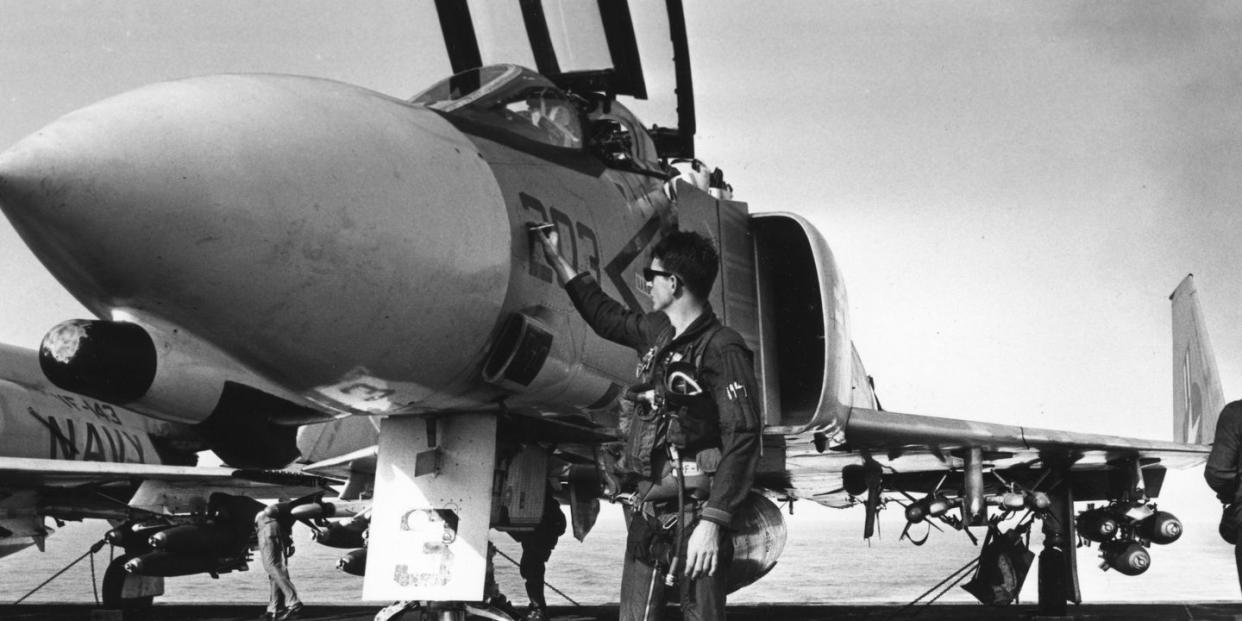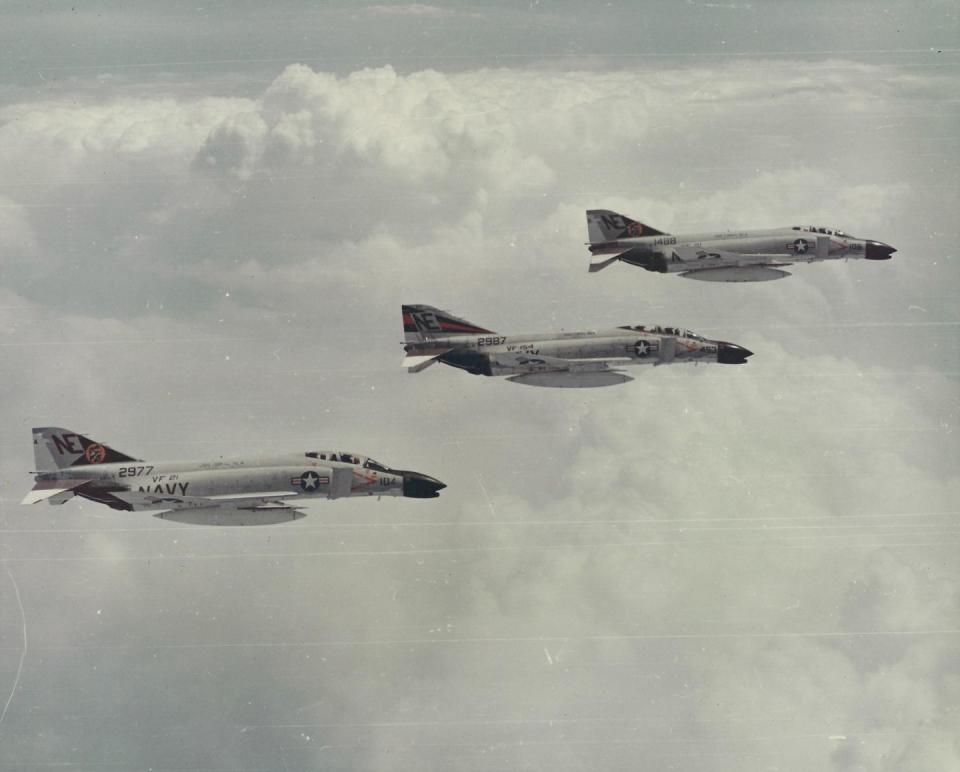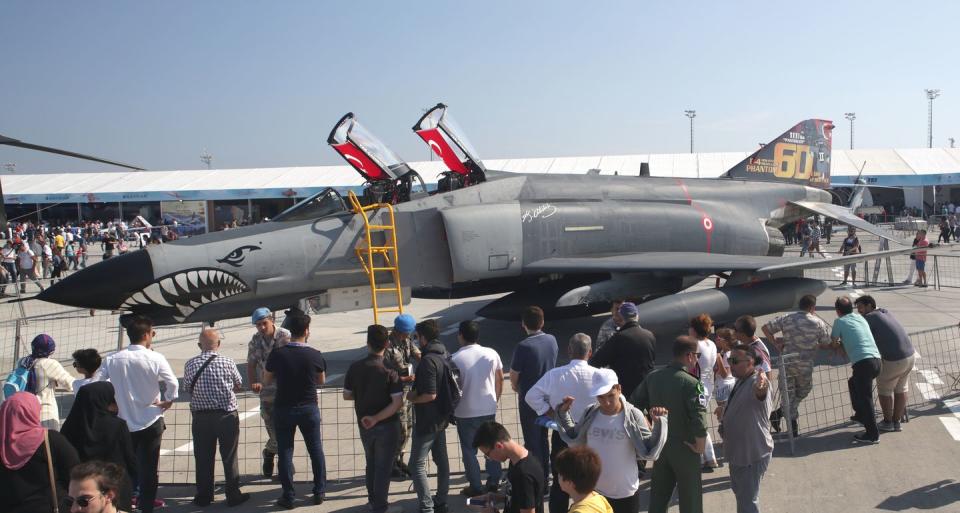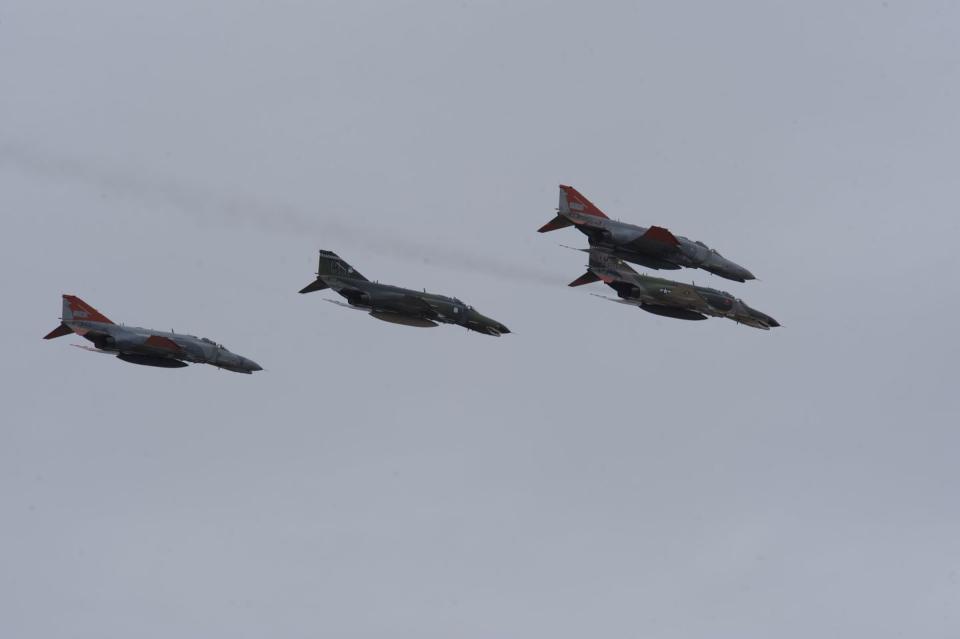Like a Ghost, the Iconic F-4 Phantom is Slowly Fading Away

The F-4 Phantom, introduced in the 1960s, is slowly disappearing from air forces worldwide.
The old jet was as versatile as the F-35, capable of both air to air and air to ground missions.
The F-35 is even operated by most of the countries that originally flew the F-4--that is, everyone except for Iran and Turkey.
The era of the F-4 Phantom, once one of the most popular fighter jets of the postwar age, is coming to a close. The McDonnell Douglas F-4 Phantom II, first introduced in the 1960s, is slowly fading away as it's being replaced in many air forces by the F-35.

The F-4 Phantom II first flew in 1958. The sequel to the otherwise obscure FH Phantom, the F-4 was originally designed as an attack fighter, a fighter jet capable of duking it out air-to-air with other fighters, but also capable of dropping bombs on target on the ground. The F-4 was large, with two J-79 engines and a crew of two, and proved adaptable to a variety of tasks. The airplane's crooked nose, serrated wing, and large air intakes were emblematic of Western air power during the Cold War.
Eventually the F-4 would serve as a mulit-role fighter, fleet air defense interceptor, air defense suppression aircraft, and reconnaissance aircraft. The F-4 was large enough to carry both air-to-air missiles and bombs on the same mission, as well as the built-in M61 20-millimeter Gatling gun. The F-4 could even carry nuclear weapons in the form of the B61 tactical nuclear bomb.

The Phantom II flew with the U.S. Navy, Air Force, and Marine Corps. Both the U.S. Navy’s Blue Angels and Air Force Thunderbirds flight demonstration teams flew the F-4 in air shows worldwide. The fighter also flew with the air forces of 11 allied countries, including Australia, Japan, South Korea, Spain, Germany, Greece, Israel, Egypt, Iran, Turkey, and the United Kingdom.
The F-4 has been flying for so long that Iran is no longer a U.S. ally, and operator West Germany unified with East Germany in 1990. A total of 5,195 F-4s were built altogether, with production ending in 1985.
The F-4 served in a number of conflicts, most famously during the Vietnam War, but also with the Israeli Air Force during the 1973 Yom Kippur War and the Iran-Iraq War of 1980-88. The F-4 has a combat record of 306 enemy aircraft shot down to 106 Phantoms downed, with 545 jets shot down by ground fire.

The F-4 Phantom was gradually phased out of the U.S. Air Force, Navy, and Marine Corps, replaced with the F-14 Tomcat, F/A-18 Hornet, F-15 Eagle and F-16 Fighting Falcon. The last F-4s left U.S. service in 1996, but a handful served as recently as 2016 as QF-4 unmanned target drones. Today,, just Iran, Japan, South Korea, Greece, and Turkey fly the jets, with each country (except for Iran) planning to replace them within a decade. More than half of countries that flew the F-4 are buying the F-35 Joint Strike Fighter, either as a direct or indirect replacement.
Source: Military.com
You Might Also Like

